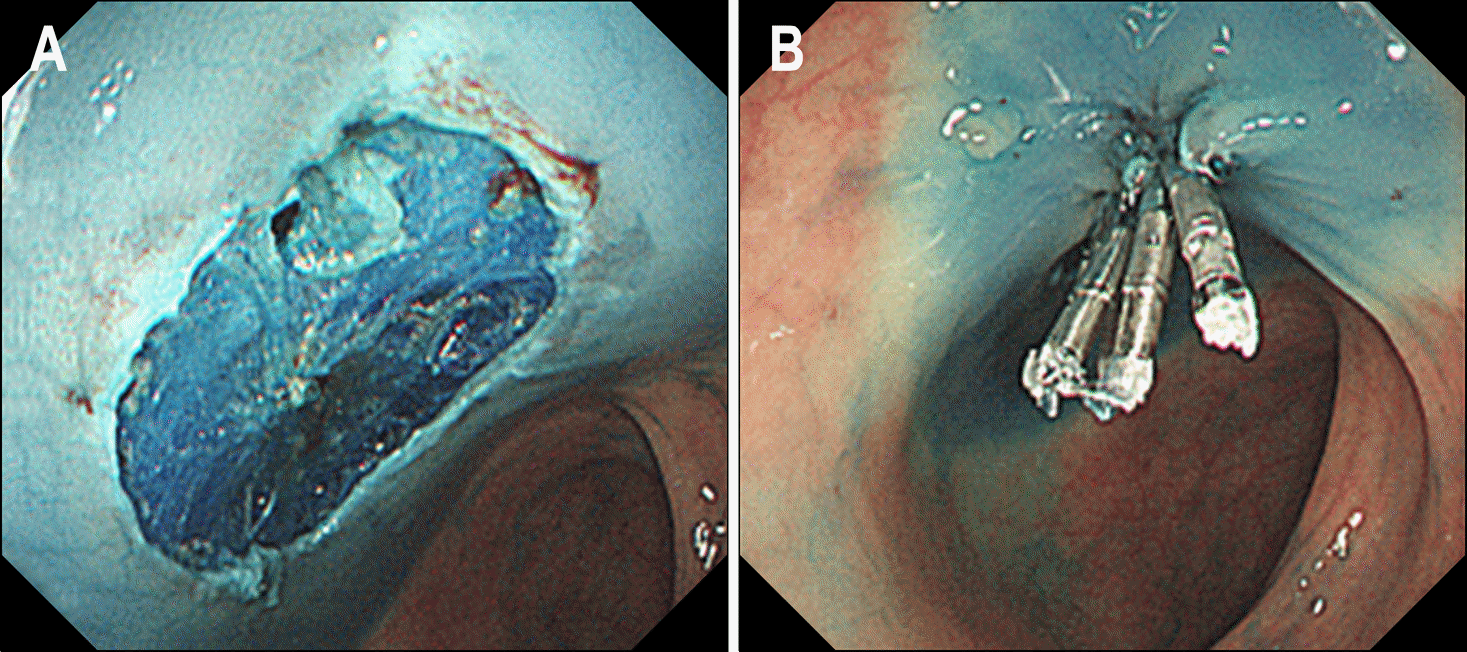Abstract
Background/Aims
Colonoscopy is the principal method for diagnosis, treatment, and follow up of colorectal disease. The study aimed to assess the incidence, clinical features, and management of colonoscopic perforations at a local general hospital.
Methods
A retrospective review of patient record was performed for all patients with iatrogenic colonic perforation after sigmoidoscopy and colonoscopy between 1997 and 2007.
Results
In the 10-year period, 16,388 colonoscopic and sigmoidscopic procedure were performed. All 10 cases of procedure related colonic perforation were developed. Perforation occurred in 9 cases during therapeutic procedure; 5 cases due to polypectomy and 4 cases due to endoscopic submucosal dissection. Perforation occurred in one case during diagnostic procedure.
REFERENCES
1. Korean Cancer Registry Center, Ministry of Health & Welfare. Annual report of Korean central cancer registry (2002.1-2002.12). Goyang: Korean Central Cancer Registry Center, Ministry of Health& Welfare;2003.
2. Nam GH, Cho MK, Lee KH, et al. Management of colonoscopic perforation during colonoscopic procedure. Korean J Gastrointest Endosc. 2005; 30:188–193.
3. Wolff WI, Shinya H. Colonofiberscopy. JAMA. 1971; 217:1509–1512.
4. Gedebou TM, Wong RA, Rappaport WD, Jaffe P, Kahsai D, Hunter GC. Clinical presentation and management of iatrogenic colon perforations. Am J Surg. 1996; 172:454–457.

5. Ghazi A, Grossman M. Complication of colonoscopy and polypectomy. Surg Clin North Am. 1982; 62:889–896.
6. Taku K, Sano Y, Fu KL, et al. Iatrogenic perforation associated with therapeutic colonoscopy: A multicenter study in Japan. J Gastroenterol Hepatol. 2007; 22:1409–1414.

7. Kim YS, Lee DS, Jung JJ, et al. Complication of colonoscopic polypectomy. Korean J Gastrointest Endosc. 2000; 21:917–923.
9. Damore LJ 2nd, Rantis PC, Vernava AM 3rd, Longo WE. Colonoscopic perforations. Etiology, diagnosis and management. Dis Colon Rectum. 1996; 39:1308–1314.
10. Abderson ML, Pasha TM, Leghton JA. Endoscopic perforation of the colon: lesson from a 10-year study. Am J Gastroenterol. 2000; 95:3418–3422.
11. George SM Jr, Fabian TC, Voeller GR, Kudsk KA, Mangiante EC, Britt LG. Primary repair of colon wounds. A prospective trial in nonselected patients. Ann Surg. 1989; 209:728–733.
12. Lo AY, Beaton HL. Selective management of colonoscopic perforations. J Am Coll Surg. 1994; 179:333–337.
13. Orsoni P, Berdah S, Verrier C, et al. Colonic perforation due to colonoscopy: a retrospective study of 48 cases. Endoscopy. 1997; 29:160–164.

14. Park HC, Kim DW, Kim SG, Park KJ, Park JG. Surgical management of colonoscopic perforations. J Korean Soc Coloproctol. 2007; 23:287–291.

15. Hall C, Dorricott NJ, Donovan IA, Neoptolemos JP. Colon perforation during colonoscopy: surgical versus conservative management. Br J Surg. 1991; 78:542–544.

16. Christie JP, Marrazzo J 3rd. “Mini-perforation” of the colon-not all postpolypectomy perforations require laparotomy. Dis Colon Rectum. 1991; 34:132–135.

17. Mana F, De Vogelaere K, Urban D. Iatrogenic perforation of the colon during colonoscopy: endoscopic treatment with clips. Gastrointest Endosc. 2001; 54:258–259.
18. Lee JG, Cho JW, Kim P, et al. A case of successful endoscopic therapy in iatrogenic perforation of the colon during colonoscopy. Korean J Gastrointest Endosc. 2004; 29:213–216.
19. Yoshikane H, Hidano H, Sakakibara A, et al. Endoscopic repair by clipping of iatrogenic colonic perforation. Gastrointest Endosc. 1997; 46:464–466.
20. Shin HP, Dong SH, Kim JH, Han YS. A case of iatrogenic rectal perforation repaired by endoscopic clipping. Korean J Gastrointest Endosc. 2003; 26:232–235.
21. Miyahara M, Kitano S, Shimoda K, et al. Laparoscopic repair of a colonic perforation sustained during colonoscopy. Surg Endosc. 1996; 10:352–353.

22. Choi KH, Hong YS, Suh SO, Moon HY. Colon perforation. J Korean Soc Coloproctol. 1999; 15:307–314.
Fig. 1.
Plain film of the chest X-ray (A) and simple abdomen (B). After colon perforation, free air under the both diaphragm were noted.

Figs. 2.
Colonoscopic findings. (A) A small perforation was noted after polypectomy in the rectosigmoid junction. (B) The perforated opening was enclosed by endoclipping with 3 clips.

Table 1.
Type of Colonoscopic Procedures and Perforation Rate




 PDF
PDF ePub
ePub Citation
Citation Print
Print


 XML Download
XML Download